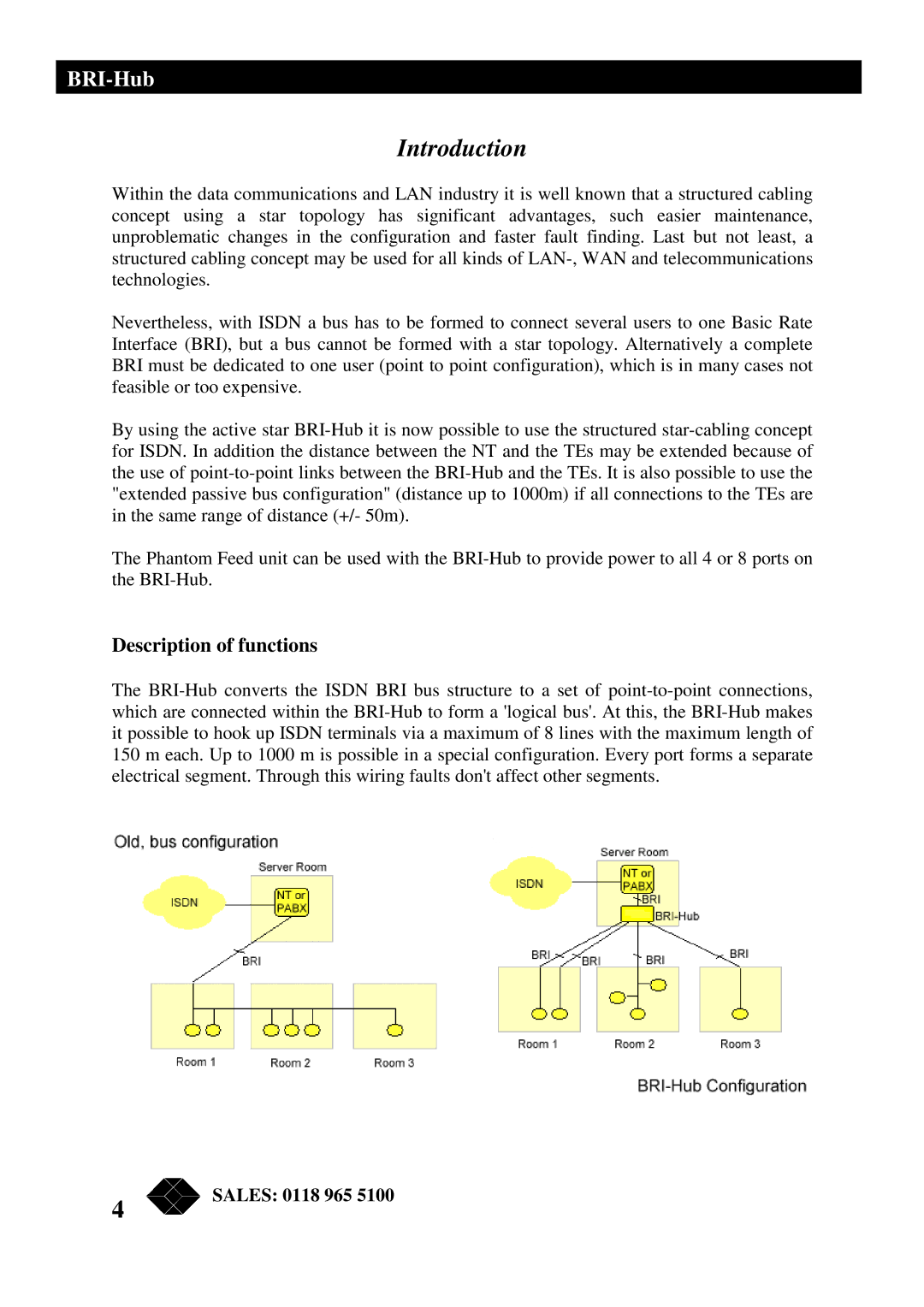BRI-Hub
Introduction
Within the data communications and LAN industry it is well known that a structured cabling concept using a star topology has significant advantages, such easier maintenance, unproblematic changes in the configuration and faster fault finding. Last but not least, a structured cabling concept may be used for all kinds of LAN-, WAN and telecommunications technologies.
Nevertheless, with ISDN a bus has to be formed to connect several users to one Basic Rate Interface (BRI), but a bus cannot be formed with a star topology. Alternatively a complete BRI must be dedicated to one user (point to point configuration), which is in many cases not feasible or too expensive.
By using the active star BRI-Hub it is now possible to use the structured star-cabling concept for ISDN. In addition the distance between the NT and the TEs may be extended because of the use of point-to-point links between the BRI-Hub and the TEs. It is also possible to use the "extended passive bus configuration" (distance up to 1000m) if all connections to the TEs are in the same range of distance (+/- 50m).
The Phantom Feed unit can be used with the BRI-Hub to provide power to all 4 or 8 ports on the BRI-Hub.
Description of functions
The BRI-Hub converts the ISDN BRI bus structure to a set of point-to-point connections, which are connected within the BRI-Hub to form a 'logical bus'. At this, the BRI-Hub makes it possible to hook up ISDN terminals via a maximum of 8 lines with the maximum length of 150 m each. Up to 1000 m is possible in a special configuration. Every port forms a separate electrical segment. Through this wiring faults don't affect other segments.

